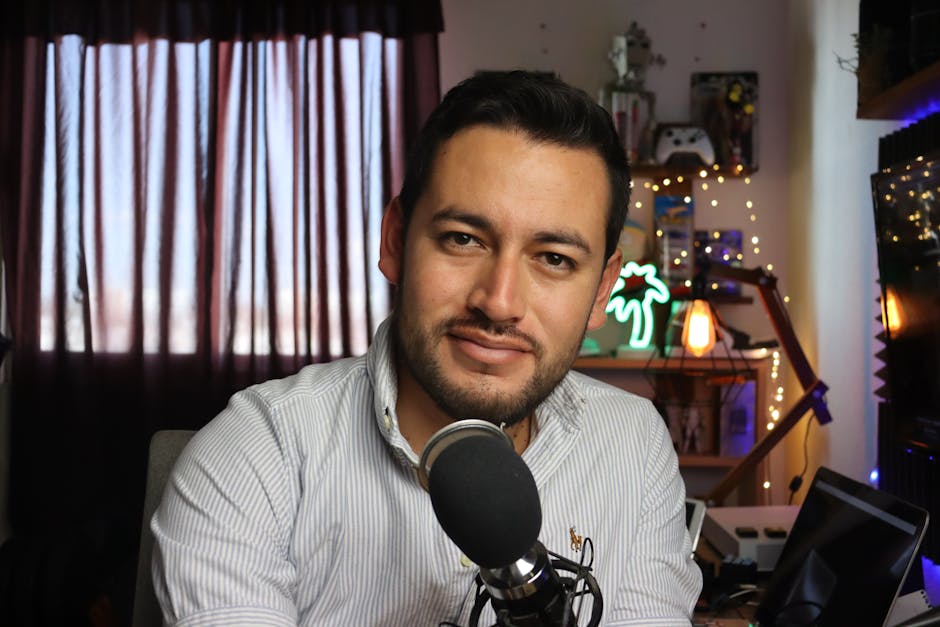How I Use Transcripts to Boost My Podcast’s Seo Rankings.
For years, I poured my heart into creating compelling podcast episodes, meticulously researching topics, interviewing fascinating guests, and editing for perfection. Yet, despite my passion, I often felt like I was shouting into a void. My listenership plateaued, and new listeners were hard to come by. The problem wasn’t my content; it was discoverability. Then, I had my “aha!” moment: the humble podcast transcript. It wasn’t just about providing an alternative for listeners; it was a powerful, often overlooked, SEO superpower. This isn’t a theoretical guide; it’s a deep dive into my personal journey and the precise methods I’ve implemented to transform my podcast’s SEO rankings, driving consistent organic traffic and bringing my voice to a much wider audience.
My Initial Discovery: How Transcripts Became My SEO Secret Weapon
Before I truly understood the SEO potential of transcripts, I viewed them primarily as an accessibility feature – a valuable addition for the hearing impaired or those who prefer to read. While this benefit remains paramount, I quickly realized I was missing the bigger picture. Search engines, at their core, are text-based. My amazing audio content, rich with unique keywords, expert insights, and invaluable information, was largely invisible to Google, Bing, and other search engines. They couldn’t “listen” to my episodes. They could only crawl the text I provided.
My podcast website had brief show notes, a title, and an episode description. That was it. All the incredible conversations, the specific terms, the detailed explanations – they were locked away in audio files. It was like having a library full of amazing books, but only listing their titles and authors on a tiny catalog card. My initial step was to simply *get that text onto my website*. I started by manually transcribing a few episodes, realizing the effort was immense, but the potential reward seemed even greater.
From Raw Audio to Indexable Text: My First Steps
My first few attempts at manual transcription were a labor of love, but unsustainable. I quickly pivoted to using automated transcription services, followed by a meticulous human review. This hybrid approach allowed me to get accurate text versions of my episodes without sacrificing my entire week. The moment I published the first full transcript on its own dedicated episode page, I felt a shift. Suddenly, I had pages packed with relevant, unique content that Google could actually read, understand, and index. This was the fundamental change that kickstarted my podcast’s SEO journey.
I focused on ensuring these transcripts were *complete*. No summaries, no abridged versions. Every single word spoken in the episode was present. This comprehensive approach ensures that all potential keywords, no matter how niche or long-tail, have a chance to be indexed. It’s about giving search engines the full context, allowing them to truly understand the depth and breadth of my content.
Unlocking the Long-Tail Goldmine: How My Transcripts Catch Niche Searches
One of the most significant shifts in my podcast’s discoverability came from understanding the power of long-tail keywords embedded naturally within my transcripts. When people search for podcasts, they often start with broad terms, but the real gems for conversion and dedicated listeners come from highly specific queries. My podcast might discuss “digital marketing,” but an episode could delve into “advanced lead generation strategies for B2B SaaS in 2024.” Without a transcript, only the broad topic would be visible.
With a full transcript, every specific phrase, every technical term, every nuanced explanation becomes a potential gateway for a highly targeted searcher. I’ve seen my episodes rank for incredibly specific phrases that I never explicitly targeted in my show notes, simply because the exact wording was present in the spoken content. This organic keyword density, reflecting natural conversation, is incredibly powerful.
My Process for Optimizing Transcript Content Beyond Just Keywords
While the raw text is a great start, I don’t just dump the transcript onto a page and call it a day. My optimization process involves a few key steps:
- Clean-Up and Readability: Automated transcripts aren’t always perfect. I manually review for errors, correct speaker attribution, and add basic punctuation. More importantly, I break up long paragraphs into shorter, digestible chunks. This isn’t just for SEO; it’s crucial for user experience. A wall of text is intimidating.
- Strategic Heading Integration: I don’t just rely on the transcript’s natural flow. I strategically add
<h3>and<h4>headings within the transcript itself, using key phrases that reflect the sub-topics discussed. This not only helps search engines understand the structure and topical relevance of the content but also makes it much easier for human readers to scan and find specific information. - No Keyword Stuffing: This is critical. My goal isn’t to force keywords; it’s to ensure the natural, valuable keywords already present in the conversation are discoverable. The beauty of a full transcript is that it organically contains a wealth of relevant terms without needing artificial manipulation.
- Adding Value to the Page: I always ensure the transcript is presented alongside the audio player, clear show notes, and any relevant links mentioned in the episode. The transcript isn’t a standalone entity; it’s part of a rich, valuable content page.
This holistic approach ensures that my transcript pages are not just text dumps, but genuinely useful resources that satisfy both search engine algorithms and human visitors.
Beyond Just Text: My Strategic Use of Transcripts for User Experience and Engagement
While my primary focus here is SEO, I’ve found that the benefits of transcripts extend far beyond just search rankings, creating a virtuous cycle that indirectly boosts my SEO efforts. A better user experience leads to longer time on page, lower bounce rates, and more shares – all positive signals for search engines.
Firstly, accessibility is non-negotiable for me. Providing transcripts means my content is available to those who are deaf or hard of hearing, those who prefer to read, or those in environments where listening isn’t feasible (e.g., quiet office, noisy commute). This broadens my potential audience significantly. I believe that inclusive content is inherently good content, and good content is what search engines ultimately want to reward.
Secondly, transcripts make my episodes “searchable” in a different way. Listeners often want to revisit a specific point or quote from an episode. Instead of scrubbing through audio, they can quickly scan the transcript. This convenience leads to a more engaged audience who values my content more, making them more likely to subscribe, share, and return. This engagement is a powerful indirect SEO signal.
Enhancing Readability: My Formatting Choices for Transcripts
To ensure my transcripts are genuinely useful and not just an SEO tactic, I invest time in making them highly readable. This includes:
- Speaker Identification: Clearly labeling who is speaking (e.g., “Host:”, “Guest:”) makes conversations easy to follow.
- Paragraph Breaks: As mentioned, breaking up long blocks of text is essential. I aim for paragraphs that represent a single thought or idea.
- Bolded Key Terms: I sometimes bold key takeaways or important terms within the transcript. This helps readers quickly grasp the main points and also subtly reinforces important keywords for search engines without being spammy.
- Clear Font and Line Spacing: Basic web design principles apply here.




Post Comment